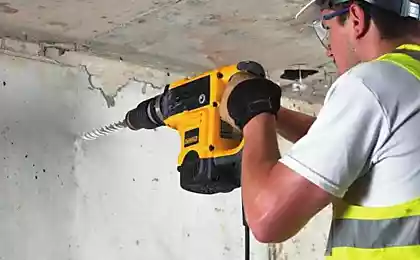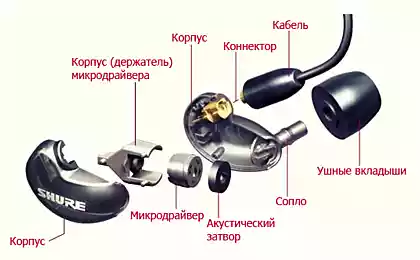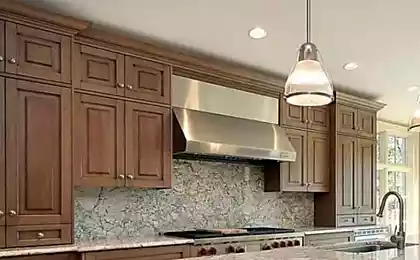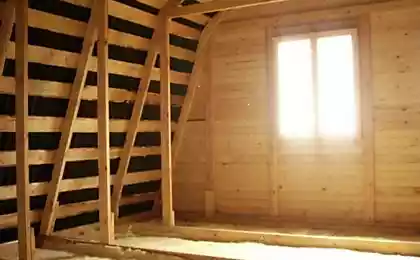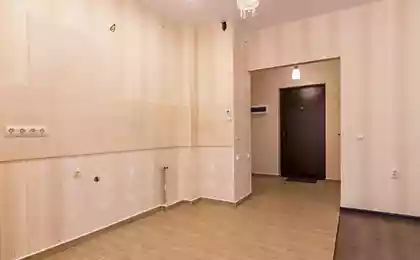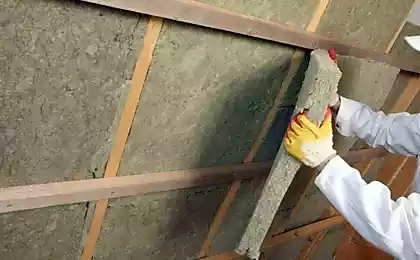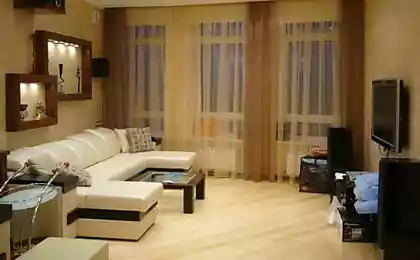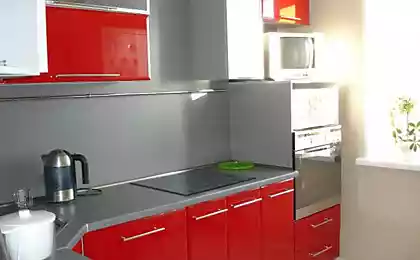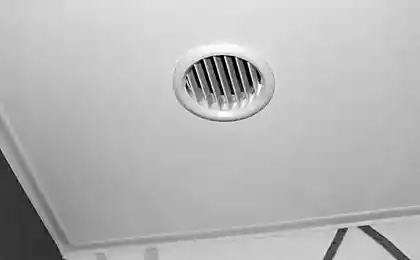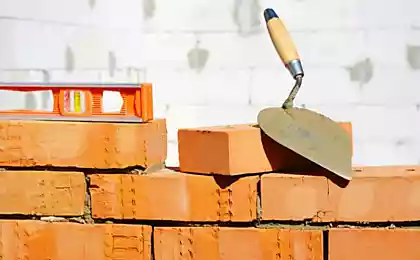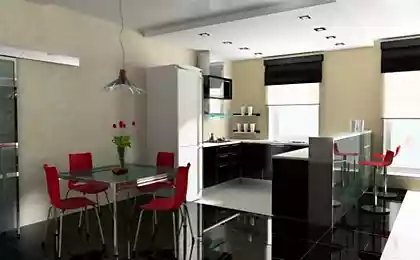713
How to make sound insulation of the ceiling in the apartment
"Cardboard" many domestic buildings has long been a byword. To the upstairs neighbors didn't bother with the details of his life, it is recommended to arrange at least a basic acoustic and noise insulation of the ceiling. And how to do it correctly for tensioning systems — we will tell you in today's statement. The types of noise and methods of their eliminationIn the context of construction and repair noises are divided into two main categories: structural and air, the name corresponds to the path of their distribution. The sources of each type of noise is also usually different. The air is music, human voice, animal sounds and working appliances. Neytralizuya such noise by dampening vibrations of the air in the layer of porous, easily compressible material.

The structural noise, also called impact or structural, arises when an intense impact on various parts of the structure of buildings. Examples of such noise could be chatter from the washing machine, her heels, even though the most infamous is the noise from the hammer drill or rotary hammer. The spread of noise structural nature eliminate via damping inserts in the joints of one part design to another, such as between the ceiling and wall nets.
In addition, in fact, a man even structural noise is perceived as air, that is, at some point, the building conveys the vibrations of the air. By the secondary noise may be damping this vibration throughout the area of the communication walls and ceilings inside the apartments, however, this method is considered more costly from the point of view of materials consumption.
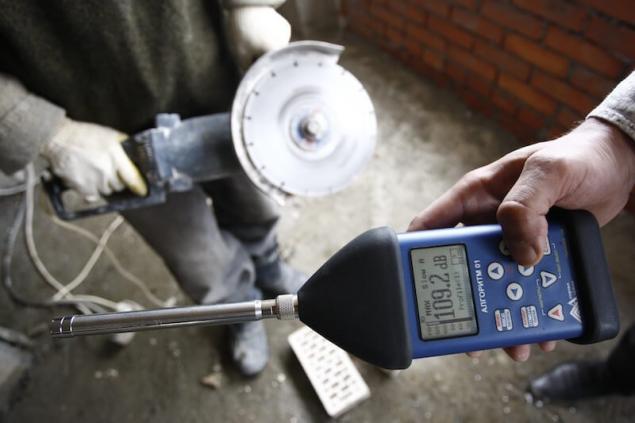
You should accept the fact that to completely eliminate the penetration of noise in the apartment from the outside will fail how not to achieve complete absorption of sounds arising indoors. However, it is realistic to bring the attenuation of the walls to the rules specified in SP 51.13330.2011. Thus, the optimal degree of sound insulation of walls is about 80-90 dB for low frequency noise (walking, shooting) and halved for high-frequency (music, voice).
Does the suspended ceiling is some advantageWhen working with stretch ceilings, we are faced with a flat blade, enclosed in a frame of the framing profile. In contrast to suspended ceiling structures, the only way the transfer of structural vibration — abutting mounting sections to the walls.
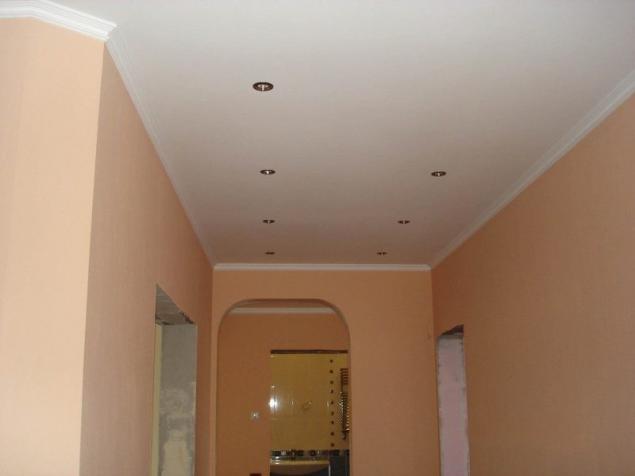
The distribution of low-frequency structural noise through the ceiling is prevented by sizing the buffer strips for the mounting profile. If you do not, you can get some semblance of dynamics the size of the entire room. Note that the increase in the ceiling will not all frequency ranges, for example, high frequency noise is extinguished due to the elasticity of the film.
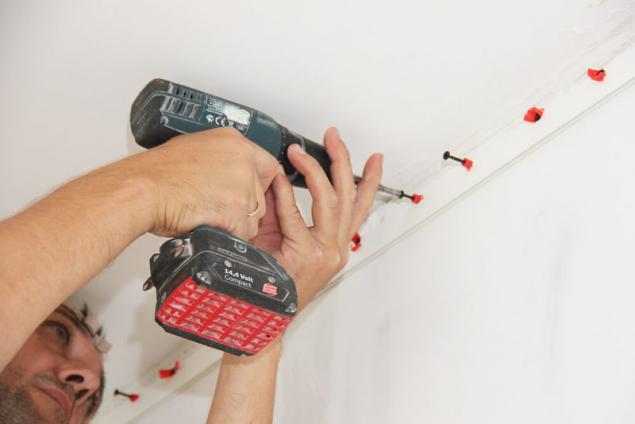
Air noise and structural vibration overlap, the situation is somewhat worse: stretched canvas their distribution practically does not prevent and even boosts. At the same time the plane of the rough ceiling remains completely free for the installation of any kind of noise of arbitrary thickness.
Dependent on the type of constructionWork to eliminate structural noise it is necessary to plan in accordance with the design of the building. In the common case, the greatest attention should be paid to nodes of the junction of the walls to the floors and features sealing joints and technological cavities. In some cases you can even come to the conclusion that the surface installation of noise insulation will not give the desired effect.
The classic example is a prefabricated house with a single-layer slab and hollow-core slabs. In such buildings there is often acoustic resonance due to the rigid adjacent plates of a wall panel. The best way is not considered to be insulation of the ceiling, and cooperation with neighbors above, with the aim of device they have sex for the floating technology.
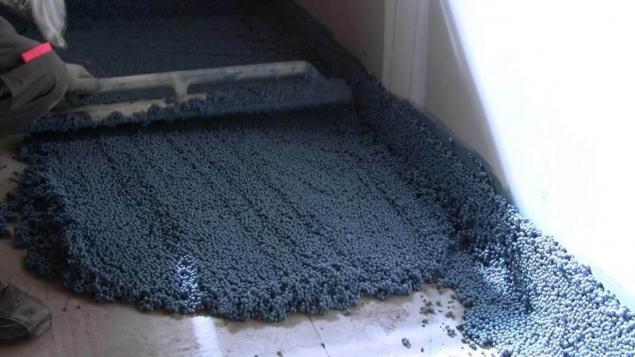
Frame ceiling without filler can be modified by coating polystyrene chips or sawdust, which will affect their attenuation. In some cases it is useful to conduct peredelku bearing beams in the walls or technological joints. For example, you can set the damping lining and the insertion of a porous non-compressible material.
The choice of sound-absorbing materialIn ordinary cases, to get rid of the noise of the neighbors above helps mounting the rough ceiling slab or roll materials, dissipating vibrations in the air till the formation of white noise with an appropriate intensity. Used as special composite materials, and conventional insulation materials like mineral wool.
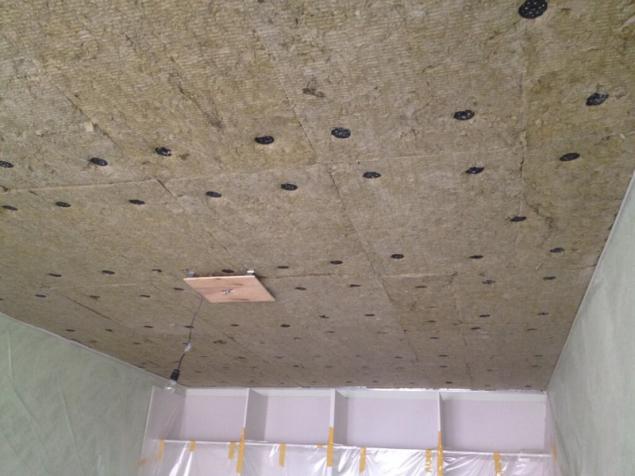
Soundproofing ceiling with mineral wool
The advantages of the special materials include their high efficiency, the disadvantages as high cost. The best way oscillation of the air occurs at the boundary of two dissimilar media, e.g., cardboard and mineral wool. The secondary role played by the shape and size of cells, density of materials and the stacking order of layers.

All of these principles can be used with self-manufacturing pie sound insulation. It should, however, avoid the advice of Amateurs, and to understand that materials such as polyurethane foam, EPPS, egg trays, tube and other "innovative" absorbers of noise do not exert any positive effect, and in some cases even aggravate the situation.
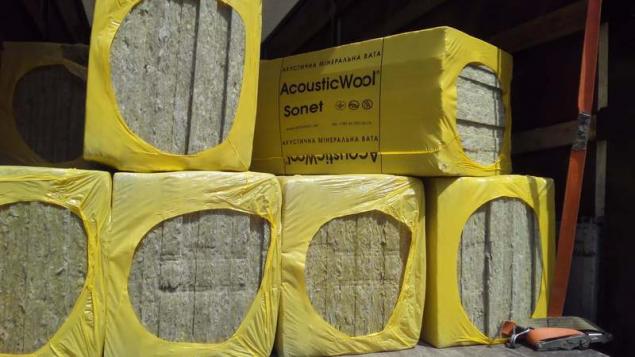
The most suitable can be considered as felt, mineral wool with a density of 40-60 kg/m3, acoustic mineral wool, wool and coconut fiber. Specialized materials can result in roll of Tecsound and mats AcousticWool as the most effective for soundproofing ceilings.
Features of installation of noiseby Performing noise insulation of the ceiling the decoration stretched canvas, you avoid the need to mount the frame a suspension system that prevents the propagation of structural noise. All you need to fix on a rough surface in one or more layers of absorbent material.
You need to provide separation of air environments, such as direct transmission of airborne sound is most active. In the General case, it helps lining the ceiling with plastic, however, such actions require caution so as not to disturb the indoor climate. If ventilation and insulation requires a free gas exchange through interfloor overlap, you must use vapor-permeable membrane.

In the General case, the fastening of insulation to the ceiling is through the Poppet plugs used in the system of wet facade. The length and step of the installation will depend on the thickness of the material, its density and ability to retain shape. The most difficult mount multilayer insulation, which require temporary fixation of the overlay layers. To use for these purposes can spot gluing or the structure supporting the cake prior to final fastening.
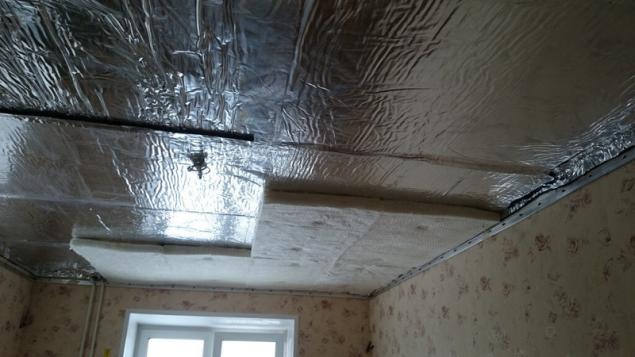
In one of the most effective pies for noise absorption concrete ceiling glued two layers of corrugated cardboard on a silicate adhesive, then of ceiling profiles for gypsum Board is going part-time system support. Rails are rows of stacked acoustic wool mats 60-70 mm, it podkashivatsya felt carpet with a thickness of about 10 mm. denser material in the lower layer allows improved absorption of noise and to use fewer fasteners.
Pair with soundproof wallsWhen installing ceiling insulation is not only important to tightly join the elements of the cell, but also to achieve minimal interaction with soundproof walls. Stretch ceiling allows you to build a false veneer walls to the ceiling and this advantage must be used.
To be sure that the corner junction of wall to ceiling will not be room for the free spread of airborne noise, the edges of ceiling insulation to be wrapped and have a hidden plane slightly below the level of the tension coating.
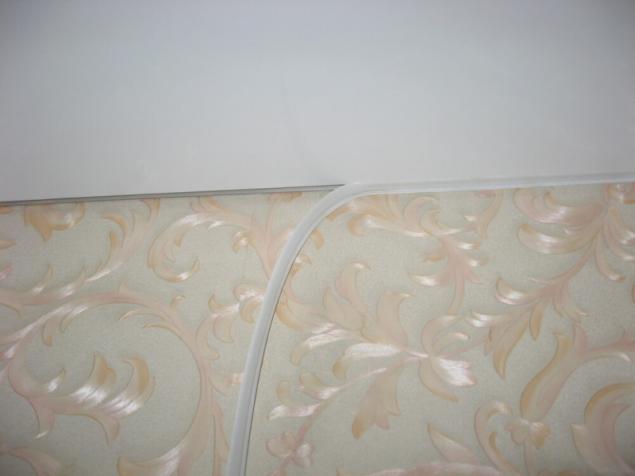
If behind false walls, a filler, promoting the absorption of sounds, you should make sure that its upper open edge is smooth and a ceiling insulator will fit snugly to stenosoma. Special fasteners in this location is not required, it is only necessary to achieve a tight stacking with no air gap and make sure that the hard surface of the sheathing was at some distance from the horizontal insulation layer, that is not rested in him. published
P. S. And remember, only by changing their consumption — together we change the world! ©
Source: www.rmnt.ru/story/isolation/1248125.htm

The structural noise, also called impact or structural, arises when an intense impact on various parts of the structure of buildings. Examples of such noise could be chatter from the washing machine, her heels, even though the most infamous is the noise from the hammer drill or rotary hammer. The spread of noise structural nature eliminate via damping inserts in the joints of one part design to another, such as between the ceiling and wall nets.
In addition, in fact, a man even structural noise is perceived as air, that is, at some point, the building conveys the vibrations of the air. By the secondary noise may be damping this vibration throughout the area of the communication walls and ceilings inside the apartments, however, this method is considered more costly from the point of view of materials consumption.

You should accept the fact that to completely eliminate the penetration of noise in the apartment from the outside will fail how not to achieve complete absorption of sounds arising indoors. However, it is realistic to bring the attenuation of the walls to the rules specified in SP 51.13330.2011. Thus, the optimal degree of sound insulation of walls is about 80-90 dB for low frequency noise (walking, shooting) and halved for high-frequency (music, voice).
Does the suspended ceiling is some advantageWhen working with stretch ceilings, we are faced with a flat blade, enclosed in a frame of the framing profile. In contrast to suspended ceiling structures, the only way the transfer of structural vibration — abutting mounting sections to the walls.

The distribution of low-frequency structural noise through the ceiling is prevented by sizing the buffer strips for the mounting profile. If you do not, you can get some semblance of dynamics the size of the entire room. Note that the increase in the ceiling will not all frequency ranges, for example, high frequency noise is extinguished due to the elasticity of the film.

Air noise and structural vibration overlap, the situation is somewhat worse: stretched canvas their distribution practically does not prevent and even boosts. At the same time the plane of the rough ceiling remains completely free for the installation of any kind of noise of arbitrary thickness.
Dependent on the type of constructionWork to eliminate structural noise it is necessary to plan in accordance with the design of the building. In the common case, the greatest attention should be paid to nodes of the junction of the walls to the floors and features sealing joints and technological cavities. In some cases you can even come to the conclusion that the surface installation of noise insulation will not give the desired effect.
The classic example is a prefabricated house with a single-layer slab and hollow-core slabs. In such buildings there is often acoustic resonance due to the rigid adjacent plates of a wall panel. The best way is not considered to be insulation of the ceiling, and cooperation with neighbors above, with the aim of device they have sex for the floating technology.

Frame ceiling without filler can be modified by coating polystyrene chips or sawdust, which will affect their attenuation. In some cases it is useful to conduct peredelku bearing beams in the walls or technological joints. For example, you can set the damping lining and the insertion of a porous non-compressible material.
The choice of sound-absorbing materialIn ordinary cases, to get rid of the noise of the neighbors above helps mounting the rough ceiling slab or roll materials, dissipating vibrations in the air till the formation of white noise with an appropriate intensity. Used as special composite materials, and conventional insulation materials like mineral wool.

Soundproofing ceiling with mineral wool
The advantages of the special materials include their high efficiency, the disadvantages as high cost. The best way oscillation of the air occurs at the boundary of two dissimilar media, e.g., cardboard and mineral wool. The secondary role played by the shape and size of cells, density of materials and the stacking order of layers.

All of these principles can be used with self-manufacturing pie sound insulation. It should, however, avoid the advice of Amateurs, and to understand that materials such as polyurethane foam, EPPS, egg trays, tube and other "innovative" absorbers of noise do not exert any positive effect, and in some cases even aggravate the situation.

The most suitable can be considered as felt, mineral wool with a density of 40-60 kg/m3, acoustic mineral wool, wool and coconut fiber. Specialized materials can result in roll of Tecsound and mats AcousticWool as the most effective for soundproofing ceilings.
Features of installation of noiseby Performing noise insulation of the ceiling the decoration stretched canvas, you avoid the need to mount the frame a suspension system that prevents the propagation of structural noise. All you need to fix on a rough surface in one or more layers of absorbent material.
You need to provide separation of air environments, such as direct transmission of airborne sound is most active. In the General case, it helps lining the ceiling with plastic, however, such actions require caution so as not to disturb the indoor climate. If ventilation and insulation requires a free gas exchange through interfloor overlap, you must use vapor-permeable membrane.

In the General case, the fastening of insulation to the ceiling is through the Poppet plugs used in the system of wet facade. The length and step of the installation will depend on the thickness of the material, its density and ability to retain shape. The most difficult mount multilayer insulation, which require temporary fixation of the overlay layers. To use for these purposes can spot gluing or the structure supporting the cake prior to final fastening.

In one of the most effective pies for noise absorption concrete ceiling glued two layers of corrugated cardboard on a silicate adhesive, then of ceiling profiles for gypsum Board is going part-time system support. Rails are rows of stacked acoustic wool mats 60-70 mm, it podkashivatsya felt carpet with a thickness of about 10 mm. denser material in the lower layer allows improved absorption of noise and to use fewer fasteners.
Pair with soundproof wallsWhen installing ceiling insulation is not only important to tightly join the elements of the cell, but also to achieve minimal interaction with soundproof walls. Stretch ceiling allows you to build a false veneer walls to the ceiling and this advantage must be used.
To be sure that the corner junction of wall to ceiling will not be room for the free spread of airborne noise, the edges of ceiling insulation to be wrapped and have a hidden plane slightly below the level of the tension coating.

If behind false walls, a filler, promoting the absorption of sounds, you should make sure that its upper open edge is smooth and a ceiling insulator will fit snugly to stenosoma. Special fasteners in this location is not required, it is only necessary to achieve a tight stacking with no air gap and make sure that the hard surface of the sheathing was at some distance from the horizontal insulation layer, that is not rested in him. published
P. S. And remember, only by changing their consumption — together we change the world! ©
Source: www.rmnt.ru/story/isolation/1248125.htm
Pent: 5 pressing questions about the plaster
Lamps are not the same! Due to which manufacturers have started to reduce the price of your lamp
